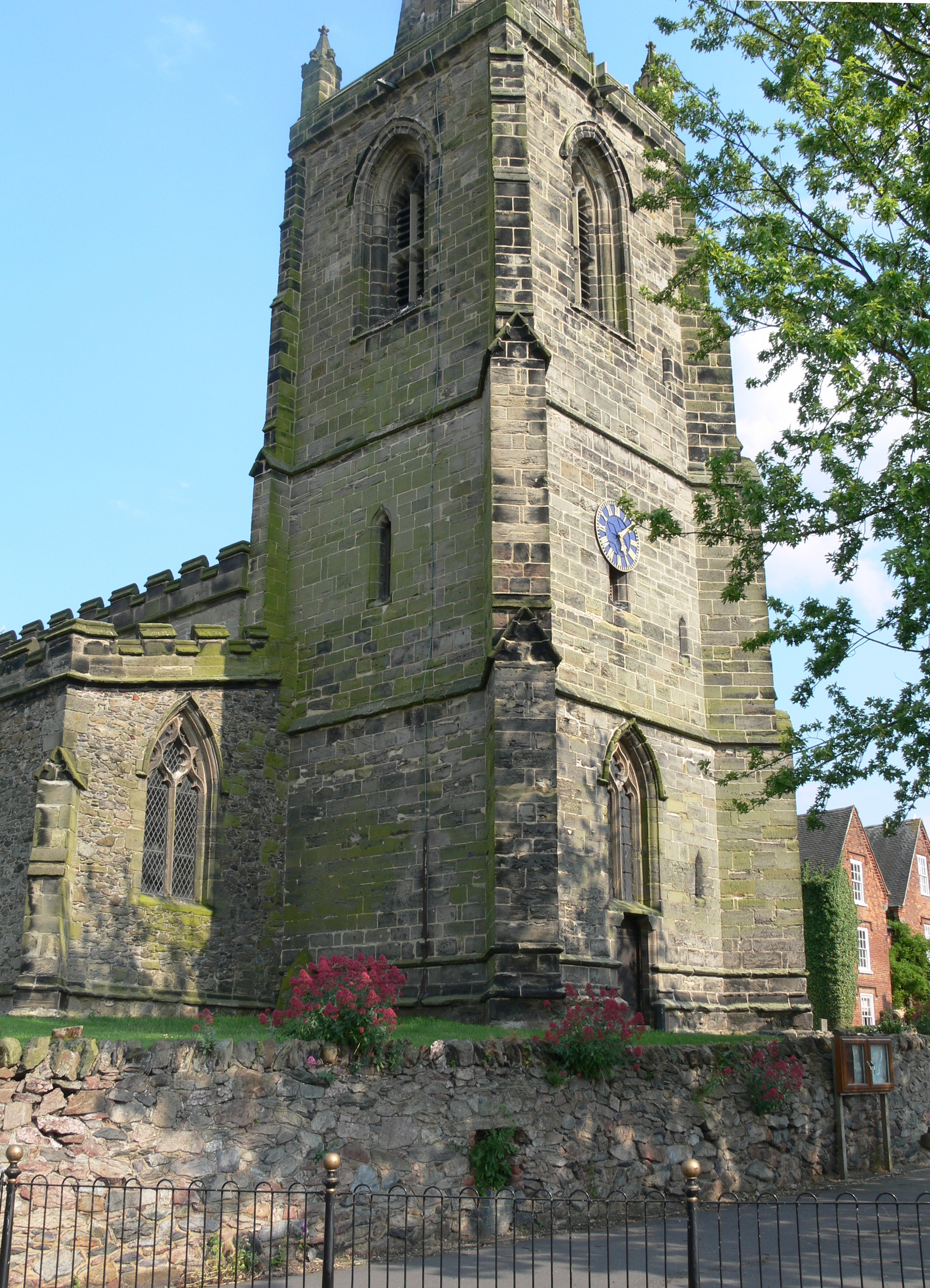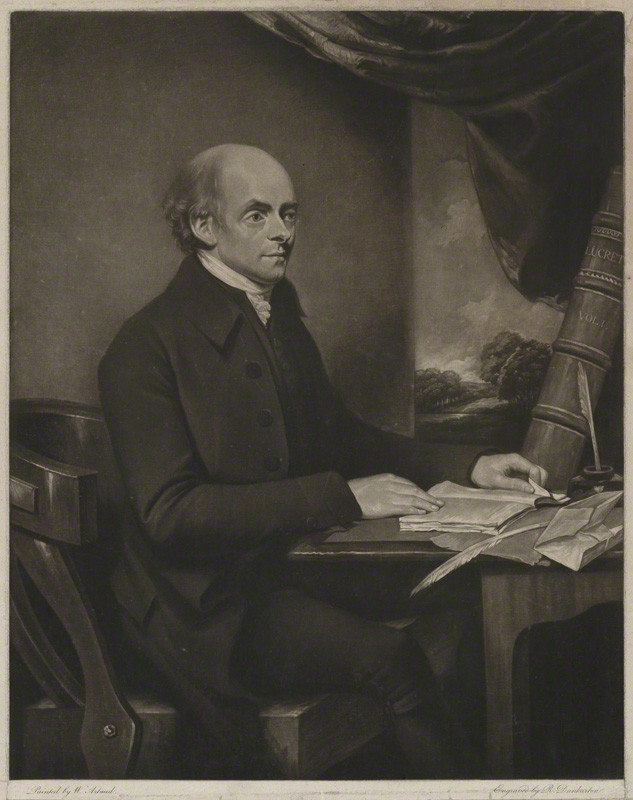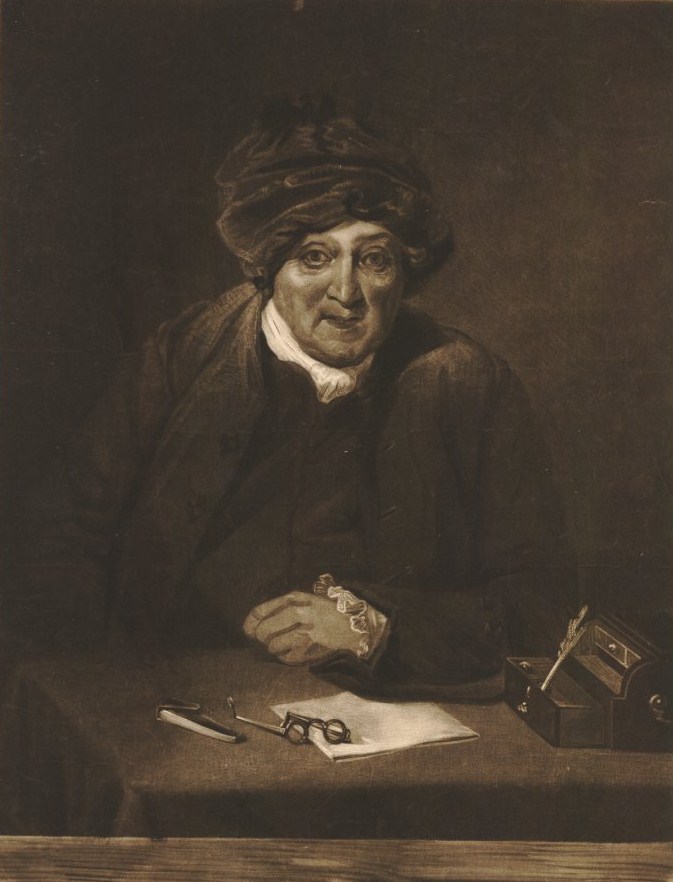|
James Glazebrook
James Glazebrook (11 October 1744–3 July 1803) was an English cleric, controversialist, and writer. Life The son of William Glazebrook, he was born at Madeley, Shropshire, on 11 October 1744. When he was a young man of twenty-three, working as a collier and getter of ironstone, he was brought under the influence of the Rev. John William Fletcher, and decided to become a clergyman. With this view he was educated at Lady Huntingdon's Trevecca College in South Wales. Glazebrook was ordained deacon by Brownlow North, the Bishop of Lichfield and Coventry, in December 1771, and six years later he received priest's orders. In 1779 he married, and moved to Warrington, where he became incumbent of a new church, St. James's, Latchford, consecrated in 1781. On being appointed vicar of Belton, Leicestershire in 1796, in bad health, he left Warrington, but he retained his incumbency at St. James's. He died at Belton on 1 July 1803, aged 58. Works Glazebrook wrote: * ''A Defence of Infa ... [...More Info...] [...Related Items...] OR: [Wikipedia] [Google] [Baidu] |
Madeley, Shropshire
Madeley is a constituent town and civil parish in Telford and Wrekin in Shropshire, England. The parish had a population of 17,935 at the 2001 census. Madeley is recorded in the Domesday Book, having been founded before the 8th century. Historically, Madeley's industrial activity has largely been in mining, and later, manufacturing, which is still a large employer in the town, along with service industries. Parts of the parish fall within the UNESCO World Heritage Site of Ironbridge Gorge, the site of The Iron Bridge, and a key area in the development of Industry. History The settlement of Madeley is recorded as far back as the Domesday Book. The town was founded prior to the 8th century, and subsequently became a market town in the 13th century. Sigward, a local ruler in the time of King Æthelbald of Mercia, is said to have held 3 hides of land at Madeley. Between 727 and 736 he sold his holdings to Mildburh, daughter of Merewalh, sub-king of the Magonsæte. She was ... [...More Info...] [...Related Items...] OR: [Wikipedia] [Google] [Baidu] |
John William Fletcher
John William Fletcher (born Jean Guillaume de la Fléchère; 12 September 1729 – 14 August 1785) was a Swiss-born English divine and Methodist leader. Of French Huguenot stock, he was born in Nyon in Vaud, Switzerland. Fletcher emigrated to England in 1750 and there he became an Vicar (Anglicanism), Anglican vicar. He began to work with John Wesley, becoming a key interpreter of Wesleyan theology, Wesleyan Christian theology, theology in the 18th century and one of Methodism's first great theologians. Fletcher was renowned in Britain for his piety and generosity; when asked if he had any needs, he responded, "...I want nothing but more grace." Early life Jean Guillaume de la Fléchère was born in 1729 and baptized on 19 September 1729 in Nyon. He was the eighth and last child of Jacques de la Fléchère, an army officer, and Suzanne Elisabeth, Crinsoz de Colombier. He was educated at Geneva, but, preferring an army career to a clerical one, went to Lisbon and enlisted. An ... [...More Info...] [...Related Items...] OR: [Wikipedia] [Google] [Baidu] |
Trevecca College
Trefeca (also Trefecca, Trevecca, and Trevecka), located between Talgarth and Llangorse Lake in what is now south Powys in Wales, was the birthplace and home of the 18th-century Methodist leader Howell Harris ( cy, Hywel Harris, italic=no). It was also the site of two Calvinistic Methodist colleges at different times; the first sponsored by Selina, Countess of Huntingdon (an English methodist leader) in the late eighteenth century; the second supported by the Welsh Calvinistic Methodist Connexion in the later nineteenth century. Teulu Trefeca In 1752, Harris, who was born in Trefeca and was one of the foremost leaders of the Welsh Methodist revival, established a Christian community there known as ''Teulu Trefeca'' ('the Trefeca Family'), modelled on the Moravian Herrnhutt community of Count von Zinzendorf. John Wesley preached for Harris's 'family' when visiting Trevecca in August 1769 for the first anniversary of Trevecca College. The additions to Harris's family house wer ... [...More Info...] [...Related Items...] OR: [Wikipedia] [Google] [Baidu] |
St James's Church, Latchford - Geograph
ST, St, or St. may refer to: Arts and entertainment * Stanza, in poetry * Suicidal Tendencies, an American heavy metal/hardcore punk band * Star Trek, a science-fiction media franchise * Summa Theologica, a compendium of Catholic philosophy and theology by St. Thomas Aquinas * St or St., abbreviation of "State", especially in the name of a college or university Businesses and organizations Transportation * Germania (airline) (IATA airline designator ST) * Maharashtra State Road Transport Corporation, abbreviated as State Transport * Sound Transit, Central Puget Sound Regional Transit Authority, Washington state, US * Springfield Terminal Railway (Vermont) (railroad reporting mark ST) * Suffolk County Transit, or Suffolk Transit, the bus system serving Suffolk County, New York Other businesses and organizations * Statstjänstemannaförbundet, or Swedish Union of Civil Servants, a trade union * The Secret Team, an alleged covert alliance between the CIA and American industry ... [...More Info...] [...Related Items...] OR: [Wikipedia] [Google] [Baidu] |
Brownlow North
Brownlow North (17 July 1741 – 12 July 1820) was a bishop of the Church of England. Early life, family and education Brownlow was born on 17 July 1741 in Chelsea, Middlesex, Great Britain, the only son of Francis North, 1st Earl of Guilford and his second wife Elizabeth (then styled as the ''dowager Viscountess Lewisham'' as the widow of her first husband George Legge, Viscount Lewisham), only child and sole heir of Arthur Kaye, 3rd Baronet. His half-siblings through their mother included Anne Brudenell (who married James Brudenell, 5th Earl of Cardigan) and William Legge, 2nd Earl of Dartmouth; his half-siblings through their father included Frederick North, Lord North and his only full siblings was Louisa Peyto-Verney (who married John Peyto-Verney, 14th Baron Willoughby de Broke). He was educated at Eton College (1752–1759) and Trinity College, Oxford (where he matriculated on 10 January 1760 as a fellow-commoner), graduating as a Bachelor of Arts in 1762. ... [...More Info...] [...Related Items...] OR: [Wikipedia] [Google] [Baidu] |
Bishop Of Lichfield And Coventry
The Bishop of Lichfield is the ordinary of the Church of England Diocese of Lichfield in the Province of Canterbury. The diocese covers 4,516 km2 (1,744 sq. mi.) of the counties of Powys, Staffordshire, Shropshire, Warwickshire and West Midlands. The bishop's seat is located in the Cathedral Church of the Blessed Virgin Mary and Saint Chad in the city of Lichfield. The Bishop's residence is the Bishop's House, Lichfield, in the cathedral close. In the past, the title has had various forms (see below). The current bishop is Michael Ipgrave, following the confirmation of his election on 10 June 2016.OurCofE twitter (Accessed 11 June 2016) History [...More Info...] [...Related Items...] OR: [Wikipedia] [Google] [Baidu] |
Warrington
Warrington () is a town and unparished area in the Borough of Warrington, borough of the same name in the ceremonial county of Cheshire, England, on the banks of the River Mersey. It is east of Liverpool, and west of Manchester. The population in 2019 was estimated at 165,456 for the town's urban area, and just over 210,014 for the entire borough, the latter being more than double that of 1968 when it became a New towns in the United Kingdom, new town. Warrington is the largest town in the ceremonial county of Cheshire. In 2011 the unparished area had a population of 58,871. Warrington was founded by the Roman Empire, Romans at an important crossing place on the River Mersey. A new settlement was established by the Saxons, Saxon Wærings. By the Middle Ages, Warrington had emerged as a market town at the lowest bridging point of the river. A local tradition of textile and tool production dates from this time. The town of Warrington (north of the Mersey) is within the bounda ... [...More Info...] [...Related Items...] OR: [Wikipedia] [Google] [Baidu] |
Latchford, Cheshire
Latchford is a suburb and electoral ward of Warrington, Cheshire, England. It is around one mile south-east of Warrington town centre and has a total resident population of 7,856. Latchford is a predominantly residential area, Latchford lies between the River Mersey and the Manchester Ship Canal, and broadly consists of 19th-century terraced housing and some open space. The canal is crossed here by a swing bridge, a high-level road bridge and the now disused Latchford railway viaduct. Its name came from Anglo-Saxon ''Læccford'' meaning "boggy-stream ford". History Latchford was originally a township in the ancient parish of Grappenhall, in Cheshire. It was also part of Bucklow Hundred, and was close to the border with Lancashire. Between 1894 and 1974, part of Latchford was placed within the County Borough of Warrington, and the registration county of Lancashire, whilst the rest of Latchford became a civil parish named ''"Latchford Without"'' and was transferred to Lanc ... [...More Info...] [...Related Items...] OR: [Wikipedia] [Google] [Baidu] |
Belton, Leicestershire
Belton is a small village and civil parish in the North West Leicestershire district of Leicestershire, England. The village is located approximately northwest of the town of Shepshed, west-northwest of Loughborough, and northeast of Ashby-de-la-Zouch. According to the 2011 Census, the parish (Including Grace-Dieu) had a population of 734. History The village's name means 'farm/settlement close to a beacon or funeral pyre'. Another suggestion is farm/settlement on an island or glade'. "The Parish Church of Belton is a 14th century structure with a later perpendicular tower, clorestory and roof. It contains the recumbent effigy tomb of Lady Roesia de Verdun, foundress of the nearby Grace Dieu Priory, and Frances Beaumont, Justice of the Common Pleas, was also buried in the church on 22nd April 1598. The registers go back to 1538." Belton also has a Church of England Primary school which caters for children aged between 4 and 10. The original school was founded in 1843 an ... [...More Info...] [...Related Items...] OR: [Wikipedia] [Google] [Baidu] |
Gilbert Wakefield
Gilbert Wakefield (1756–1801) was an English scholar and controversialist. He moved from being a cleric and academic, into tutoring at dissenting academies, and finally became a professional writer and publicist. In a celebrated state trial, he was imprisoned for a pamphlet critical of government policy of the French Revolutionary Wars; and died shortly after his release. Early life and background He was born 22 February 1756 in Nottingham, the third son of the Rev. George Wakefield, then Rector (ecclesiastical), rector of St Nicholas' Church, Nottingham but afterwards at Kingston-upon-Thames, and his wife Elizabeth. He was one of five brothers, who included George, a merchant in Manchester. His father was from Rolleston, Staffordshire, and came to Cambridge in 1739 as a sizar. He had support in his education from the Hardinge family, of Melbourne, Derbyshire, his patrons being Nicholas Hardinge and his physician brother. In his early career he was chaplain to Margaret Newt ... [...More Info...] [...Related Items...] OR: [Wikipedia] [Google] [Baidu] |
Infant Baptism
Infant baptism is the practice of baptising infants or young children. Infant baptism is also called christening by some faith traditions. Most Christians belong to denominations that practice infant baptism. Branches of Christianity that practice infant baptism include Catholics, Eastern and Oriental Orthodox, and among Protestants, several denominations: Anglicans, Lutherans, Presbyterians, Congregationalists and other Reformed denominations, Methodists, Nazarenes, Moravians, and United Protestants. Opposition to infant baptism is termed "catabaptism". Ceremony The exact details of the baptismal ceremony vary among Christian denominations. Many follow a prepared ceremony, called a rite or liturgy. In a typical ceremony, parents or godparents bring their child to their congregation's priest or minister. The rite used would be the same as that denomination's rite for adults, i.e., by pouring holy water ( affusion) or by sprinkling water ( aspersion). Easte ... [...More Info...] [...Related Items...] OR: [Wikipedia] [Google] [Baidu] |
Thomas Kirkland
Thomas Kirkland M.D. (1721–1798) was an English physician and medical writer. Life Kirkland was born at Ashbourne, Derbyshire, the son of Thomas Kirkland, an attorney, and his father's second wife, Mary Allsop. After a grammar school education he was apprenticed to a surgeon in Loughborough. He studied under Thomas Lawrence in London. Kirkland became a surgeon at Ashby-de-la-Zouch, Leicestershire. In January 1760 he became involved in the murder case around Laurence Shirley, 4th Earl Ferrers: he was called in to attend the steward of Lord Ferrers after he had been shot by his master. Kirkland, detained to dinner with the disturbed Earl, left the house covertly, brought a magistrate with armed men, and removed the wounded steward, Johnson, who soon died. He was a witness at the trial. By 1774 Kirkland had graduated M.D. at Edinburgh. He subsequently became a member of the Royal Medical Societies of Edinburgh and London. He died at Ashby-de-la-Zouch on 17 January 1798. Works Ki ... [...More Info...] [...Related Items...] OR: [Wikipedia] [Google] [Baidu] |







